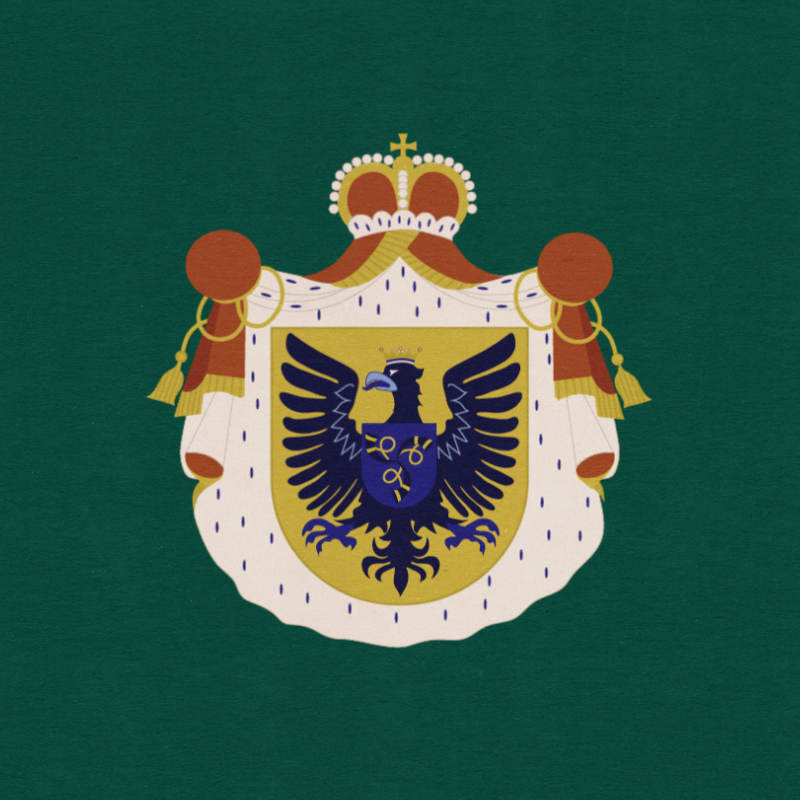Rich, Influential and Famous – the Noble Radvila Family of the Grand Duchy of Lithuania
> BACK TO 100 STORIESThe Radvilas were one of the most influential families in the Grand Duchy of Lithuania, which prospered in the fifteenth century and retained its power and wealth until the collapse of the state at the end of the eighteenth century. The name of the Radvilas was known not only in the Grand Duchy of Lithuania, but all over Europe: the family acquired and maintained 23 castles, 426 towns and cities, 2.032 estates, and 10.053 villages. Radvila Castle in Nesvizh was famous for its incredible luxury – it had a theater which staged plays and ballets, and an orchestra. The influence of the Radvila family on the political life of the country was enormous, most of the men of the family held the highest state positions: three of them became bishops, and one of them rose to become a cardinal. The highest title was given to Barbora Radvilaitė – she was crowned Queen of Poland and Grand Duchess of Lithuania. However, the Radvila family didn’t stop at politics: they patronised the arts and sciences, built churches and monasteries, and supported the translation of the Bible, the preparation of the oldest map of Lithuania, and the establishment of Vilnius University.
The Radvila family was so influential that legends and heroic epics were written about them. The origin legend of the family recounts how the sage Lizdeika once found a child in a wolf’s den. The sage raised the foundling and named him Radvila (“rado vilko”) [Eng. found wolf]. This foundling was the ancestor of the famous Radvila family. The poem Radviliada (published in Vilnius in 1592), which glorifies Radvilas, is seen as one of the most outstanding works of the Lithuanian Renaissance. The main hero of the Radviliada is Mikalojus Radvila “the Red” and the poem recounts the nobleman’s glorious life, his wisdom, and his victories in war.
The Radvilas were not only rich and influential, but also rebellious. Mikalojus Radvila “the Black”, famous in the Grand Duchy of Lithuania for his excellent education, published the first Lithuanian Bible and wrote a scandalous book Duae Epistolae. This work was included in the Index Librorum Prohibitorum [Eng. List of Prohibited Books] of the Roman Catholic Church, because Radvila “the Black” calls the Roman Catholic Church an ‘irreparable evil’. This approach is not surprising: Radvila “the Black” was an evangelical Protestant, and the Protestants criticised the Catholic Church very strongly at the time. Radvila “the Black’s” cousin Mikalojus Radvila “the Red” shocked the nobility of the Grand Duchy of Lithuania by not signing the Lublin Union Act, because he wanted to preserve Lithuania’s independence. He snapped back at the Polish nobles who tried to prove that the Grand Duke of Lithuania and King Jogaila of Poland had gifted Lithuania to Poland: ‘No one could have given us, because we are free people.’
The Radvila women were no less impressive, educated, and rebellious. Ona Kotryna Sanguškaitė-Radvilienė went down in history as a great economist: she administered the Radvila estates, took care of the construction of roads and bridges, organised the production of luxury goods, and established ore mines. Pranciška Uršulė Radvilienė was one of the first Lithuanian writers and playwrights. However, the most famous woman of the Radvila family is, of course, Barbora Radvilaitė, who became Grand Duchess of Lithuania and Queen of Poland. Stories are still written about the love of Barbora and Sigismund Augustus, which even death could not overcome. Teofilė Konstancjia Radvilaitė is famous for rejecting many noble suitors because she was patiently waiting for the right one. He did eventually show up and she married Ignot Felix Moravsky, a poor but beloved hussar of the Radvila Palace militia. However, Teofilė Radvilaitė’s adventures did not end with her wedding – she travelled all over Europe and described her travels in her diary.

